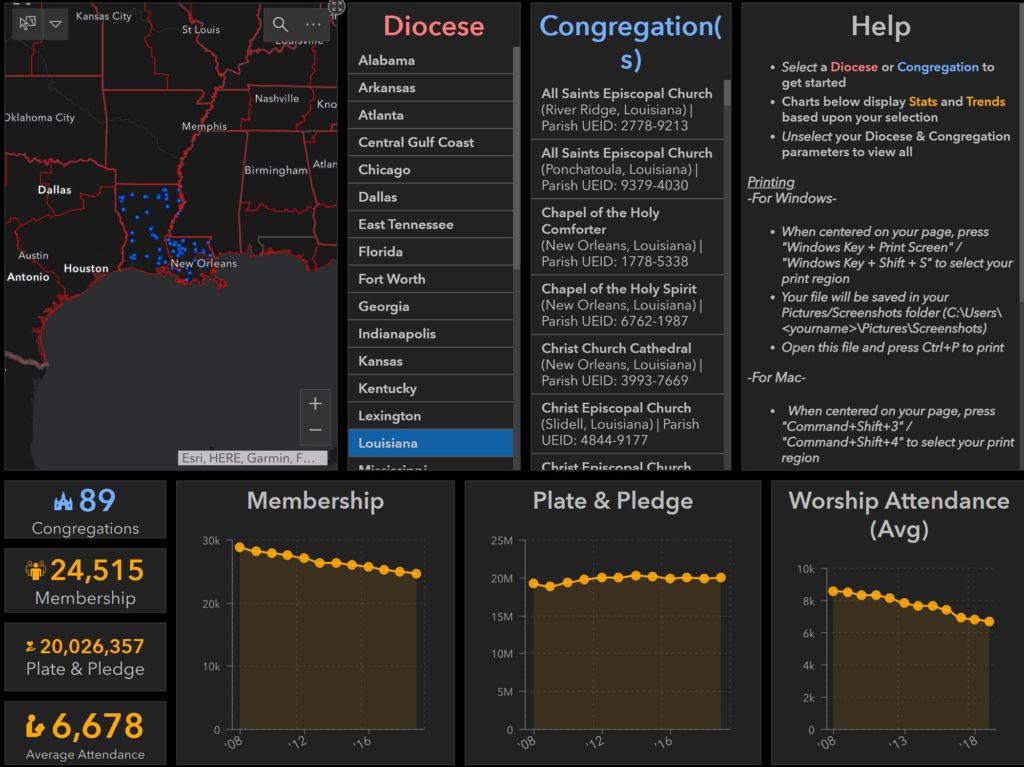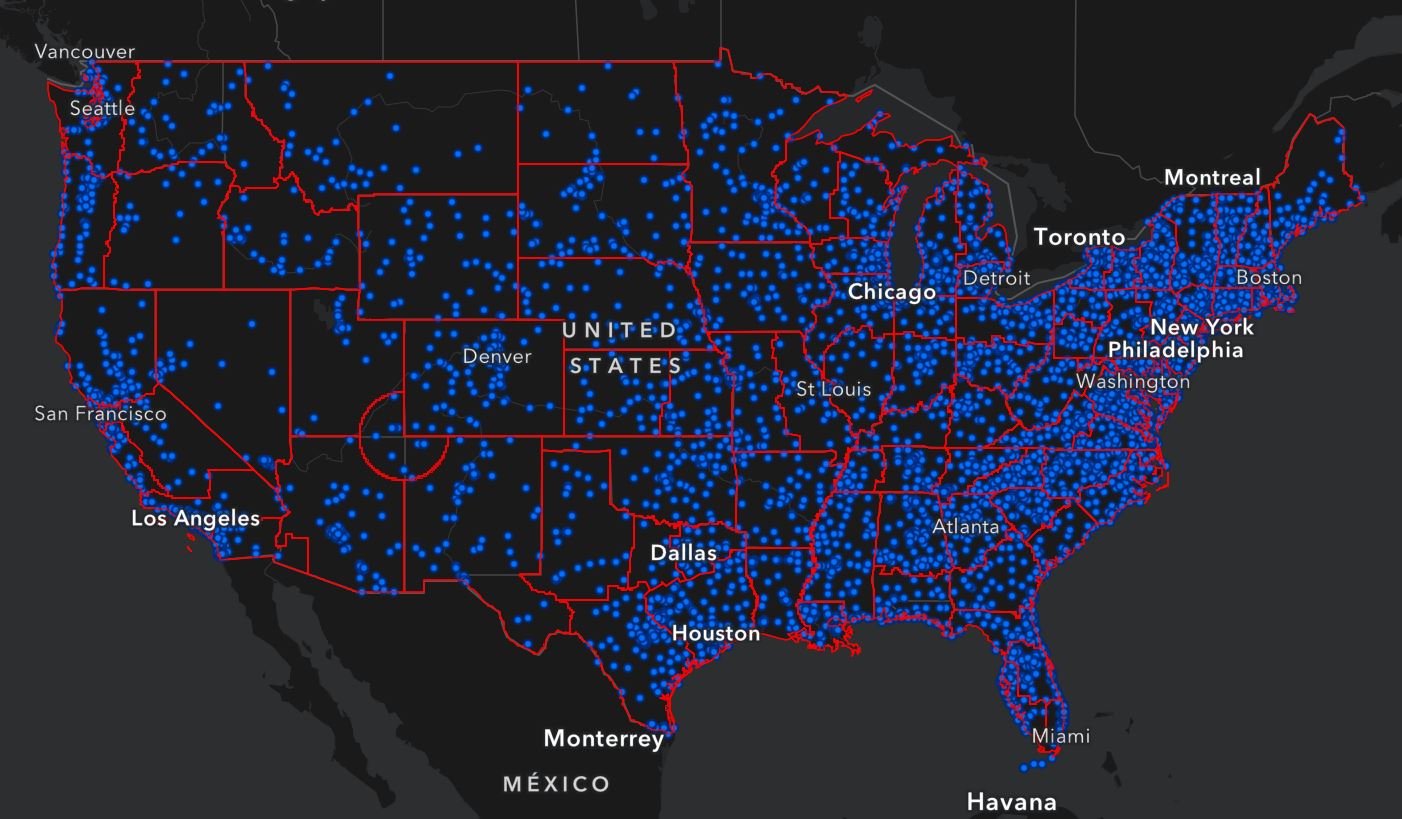As an American millennial, there’s a common “proclamation” that I hear amongst my same-age brethren — it sounds something like, “Oh yeah, I’m a Catholic” or “Yep, been a Baptist my whole life.”
But despite what verbally came out of their mouth in that fantastically unadulterated moment, what most of them are really trying to say is, “Oh yea, I was raised Catholic” or, “Yep, I was raised Baptist but haven’t been to church in years.”
That’s because most millennials (and even most Gen Xers) don’t actually, physically go to church. And while most Christian denominations would agree that attendance isn’t exactly a requirement for a connection with God (although some say it is), it’s not exactly an ideal situation for the institution itself.
So when most of us say that we’re Catholic or Baptist or something else, it usually means that we either (1) still identify with a denomination and just aren’t attending, or (2) we are saying it to each other with an unspoken, mutual understanding that neither one of us attends church anymore but we’re still too afraid to completely renounce the faith that we were raised on.
In most cases, it’s probably the latter.
And of course, yes, I am 100% saying this out of personal observation, but it’s also hard to disagree with the data. Because as I’ve outlined below, data does indeed exist and it all points towards one single fact — Churches, as institutions, are dying.
The Statistics Don’t Lie – Traditional Churches are Dying
When Gallup first measured church membership in 1937, it was at 73% — a number that would stay steady for nearly six decades. But just before the turn of the 21st century, that number started to decline, and decline fast.
Membership ticked down to 69% by the year 2000 and then plummeted, to 50%, by 2018.
Today, just 47% of Americans polled by Gallup said that they belonged to a church — a remarkable change in such a short amount of time and the first time in history that the majority of Americans don’t consider themselves members.
As for me, this is something I find personally fascinating. I’m an Episcopalian and my Episcopal roots run pretty deep — my mother is an Episcopal priest, my cousin is married to an Episcopal priest, my grandfather was Senior Warden of an Episcopal church, the list goes on and on. At one point in my life, there was no distinction between home and church — they were basically the same thing.
Yet, when I started attending church as a working adult, it became blatantly obvious that things had changed. Of the 50 or so members that regularly attended, only three of us were in our twenties, and none of us were exactly “routine attendees.”
Even worse, when I told friends that I actually go to services, I was usually met with the same strange look of bewilderment as if I had told them that the world is flat.
But the more and more that it happened, the more and more I became certain — churches are in fact going away.
Fast forward to today, and even I, the son of an Episcopal priest, no longer attend services. And I’m not sure if it’s Covid, a lack of people my age, or just general laziness, but I do wonder if my involvement has disappeared forever. Maybe I’ve finally fallen into the category of, “Yep, I was raised Episcopal” or maybe I’m just on some sort of religious coffee break. My mom says that I’ll go back once I have kids… we’ll see.
Why are Churches Dying? What Other Evidence Exists?
So all of this got me thinking — is there data out there, aside from the Gallup poll mentioned above, that backs up what we already know. Are churches dying and actually self-reporting their own decline?
Strangely, the answer is yes — but I will admit, it’s not the easiest information to find and there’s not really a central location for it either.
First, there’s the Pew Research Center, which conducts “public opinion polling, demographic research, content analysis and other data-driven social science research” about religion. If you want some great info about anything and everything religion, this is your place.
And then there are the religious institutions themselves, who sometimes (probably reluctantly) release their own internal data and statistics.
For example, the Catholic Church puts out an annual Statistical Yearbook of the Church while the Methodist Church has its own Statistics Directory.
However, from what I’ve observed, the information is pretty patchy. Some denominations release only what they want the public to know — like the Catholic Church and the Southern Baptist Church — and other denominations, such as the Episcopal church, release anything and everything, including church by church attendance numbers.
But regardless of what’s released and what’s held close to the chest, all of the reports can still be sifted through and analyzed to some degree. And all of it still points towards the same trend — churches are declining in membership, growth, and most importantly, attendance.
If you would like to explore the data yourself, here’s a quick list of everything I could find on churches that self-report statistics:
- Catholic Statistics: Self-reports through the Statistical Yearbook of the Church (not all data available to the public)
- Episcopal Statistics: Self-reports through the Episcopal Interactive Dashboard and Toolbox.
- Lutheran Statistics: Self-reports through the Lutheran World Federation’s Membership Statistics report.
- Methodist Statistics: Self-reports through The United Methodist Church Online Directory and Statistics
- Presbyterian Statistics: Self-reports through the PC(USA) 2020 statistics with the Office of General Assembly.
- Southern Baptist Statistics: Self-reports through Annual Church Profile (ACP) data which is collected at their local Baptist associations and/or their state conventions and then compiled and released by the Lifeway Christian Resources. The Baptist World Alliance also has some data.
- Pentecostal Statistics: No central authority governing Pentecostalism but they do have the Atlas of Pentecostalism.
- Mormon Statistics: The First Presidency of The Church of Jesus Christ of Latter-day Saints self reports a Statistical Report during their General Convention.

Is Traditional Worship Dying with it? Yes, and Attendance Means Everything
There’s a big difference between membership and attendance and I imagine that this concept frustrates a lot of church leaders.
I could probably walk up to any church and become a member, but if I’m not attending or actively participating in their organization, then I’m not really contributing to their longevity — whether financially, philanthropic, or otherwise.
And this is important to understand because as most churches in America are organized, they require participants, and more importantly, participants who donate money. And if churches lose donations or pledges, then they can’t pay for salaries, general upkeep, or facilitate community charity.
What does this mean?
It means that unless there’s some unexpected, monumental shift in America’s youth, church attendance will continue to decline as millennials get older.
And just for proof, let’s take a look at U.S. attendance numbers from a few of the churches listed above.
Methodist:
- 2010 Attendance – 2,982,102
- 2019 Attendance – 2,366,379
- Decline of 20.6% in 9 years
Episcopal:
- 2008 Attendance – 660,000
- 2019 Attendance – 518,000
- Decline of 21.5% in 11 years
Southern Baptist:
- 2010 Attendance – 6,195,449
- 2019 Attendance – 5,250,230
- Decline of 15.2% in 9 years
Why the Church is Failing to Attract Young People
If organized religion is going away, it’s going away because American youth (if you can even call Millennials youth anymore) just aren’t interested in it.
But why is that?
Well, if you ask a preacher, priest, or pastor, a lot of them seem to sidestep the question — instead choosing to highlight their own church’s personal successes rather than accept universal data. At least that’s been my experience.
If you were to ask an average non-attender, however, I think it’s safe to say that the concept of church, to be frank, freaks them out.
And when I say “freaks them out” I mean that people are turned off by church because (1) church is stereotyped, and (2), for most denominations, social issues within the church haven’t caught up with society.
1. Why Churches Fail? Church is Stereotyped
When people think of church, I imagine that their brain, like mine, conjures up an image of something that they’ve seen or experienced.
I think of an Episcopal summer camp where I spent A LOT of time as a kid — and almost all of my memories are pretty positive.
But for those that had a bad experience, whatever that may be, that memory probably hasn’t gone away.
Maybe it was a simple disagreement or maybe it was something more serious.
Or, maybe it was a guy on the street with a megaphone telling you you’re going to hell.

And all of those experiences can be absolutely horrible, but they’re not necessarily a good indicator of organized religion as a whole.
Some churches do this kind of stuff, yes, but there’s also plenty of churches who don’t.
There are right-leaning churches and there are left-leaning churches. There are some who take the bible literally and there are some who look at it metaphorically. It all depends on the denomination and sometimes, the individual church itself.
But unfortunately, all denominations are lumped together because more often than not, the outward extremities of one church are visually and mentally contagious — at least through the eyes of the observer.
2. Why Churches Fail? Social Issues Within the Church Haven’t Caught up with Society
A lack of social progress shouldn’t come as a surprise. Society has changed a lot in the past two decades and the vast majority of American churches simply haven’t kept pace.
In some situations, once traditionally liberal-leaning churches — such as the Catholic Church — have maintained some popular social beliefs (such as their commitment to the poor), but have doubled down on other controversial issues (such as abortion). And despite Pope Frances’ popularity and overhaul of sex abuse laws within the church, things like the ordination of women is still off the table — As of June 2021, there is now a “code that stipulates specifically that both the person who attempts to confer ordination on a woman and the woman herself incur automatic excommunication and that the cleric risks being defrocked,” one of the worst punishments in canon law.
Other churches — such as the Episcopal Church — have been at the forefront of progressive issues but are still “stereotyped” and battling to convince the “religious nones” (who are more liberal) to join something they’ve already written off. It’s an uphill battle, to say the least.
But despite a few up-to-date denominations, most are still behind the curve on at least one big social issue of the day which is usually enough to turn someone away.
| Religious Denomination | Ordains Women | Gay Marriage | Abortion |
| Catholic | Strongly Opposes | Strongly Opposes | Strongly Opposes |
| Episcopal | Accepts | Accepts | Depends |
| Lutheran (Evangelical) | Accepts | Accepts | Depends |
| United Methodist | Accepts | Opposes | Depends |
| Presbyterian | Accepts | Accepts | Fully Approves |
| Southern Baptist | Opposes | Opposes | Mostly Opposes |
| Pentecostal | Opposes | Opposes | Mostly Opposes |
| Church of Jesus Christ of Latter-day Saints (Mormon) | Opposes | Opposes | Mostly Opposes |
| United Church of Christ | Accepts | Accepts | Fully Approves |
So, when we compare American social issues with the church, it’s easy to see that most Americans — especially those that are younger — have accepted new social norms while most denominations have not.
And yes, you could argue that political power has continually flip-flopped between 2000 and 2020, but that information is kind of irrelevant when we look at society from the bottom up.
Because despite who’s in control or what talking point has gone viral, social progress in the U.S. typically doesn’t move backward (but will experience bumps of course).
Gay Marriage — Legal as of 2015 and has 70% support among the American public — Still can’t be married in certain churches.
Women’s Rights — The first woman is elected Vice President of the United States in 2020 — still can’t be ordained in certain churches.
Abortion — Legal as of 1973 – with Roe v Wade – and has majority support among Americans — Still have churches taking firm stances against it.
So are Churches Dying in the United States?
As outlined above, the statistics don’t lie — American churches are seeing an unprecedented decline and it doesn’t appear to be slowing down anytime soon.
Whether Catholic, mainline protestant, or evangelical, organized religion is disappearing at an alarming rate and unless something completely unexpected happens, the decline is likely to continue. From my experience and personal observation, it’s because of the reasons I’ve listed — but that’s not to say that other factors don’t play a part (I can easily see how social media, educational attainment, millennial financials have contributed as well).
But regardless of the reasons, opinion polls and self-reported statistics are all in agreement and point towards the same fact — churches, as institutions, are dying.
The question now is if and when the decline will stop.
To see more interactive tools like the one’s we’ve listed in “Are Churches Dying in America? Most Data Says Yes,” explore our web mapping applications page where you’ll find hundreds of useful tools related to religion, climate change, social justice, and more.

Millennial Cities
Want free articles, news, tools, and information? Subscribe below and we’ll add you to the list!
Find more articles like “Are Churches Dying in America? Most Data Says Yes” on our exclusives page.
Find other news relating to “Are Churches Dying in America? Most Data Says Yes” on our news page.
